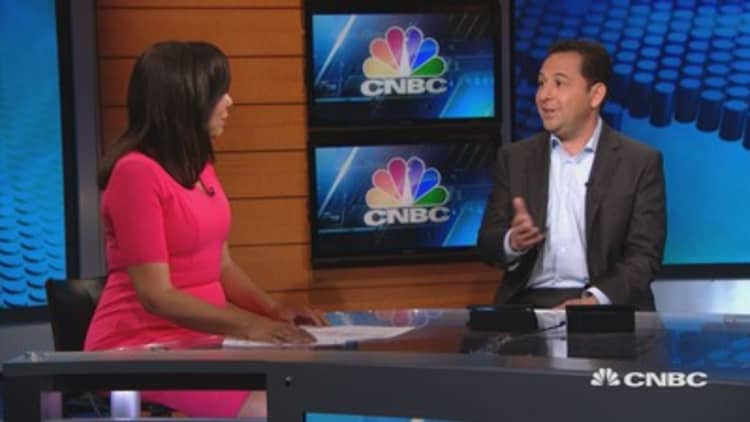
As the weather turns cool in many parts of the country, financial advisors and their clients turn their attention to a perennial item on their end-of-year to-do list: tax-loss harvesting, a strategy designed to match up investment gains with losses.
"[It's] a way to save investors money on their current tax returns," explained Sheryl Rowling, a CPA and certified financial planner with Rowling & Associates.
When tax-loss harvesting, investors sell securities at a loss for the explicit purpose of zeroing out gains. Any leftover losses can sit around and be used in future years, though you cannot offset gains from previous years. In addition to offsetting gains, investors can also use up to $3,000 of their losses against their current income.
Even investors who don't plan to realize gains in a given year would be wise to do some tax-loss harvesting, said Mike Piper, a CPA and publisher of the blog Oblivious Investor. The reason is that mutual funds are required to pass on their capital gains to shareholders, even when shareholders themselves don't sell. Having losses elsewhere in your portfolio can offset those gains.
Periods like the late summer selloff provide excellent opportunities to take losses.
Anytime there is a downturn in the market and you're able to take advantage of losses, there's a possibility of showing losses on a client's tax return even as their portfolio is up.Sheryl Rowlingcertified financial planner with Rowling & Associates
Timing isn’t everything
While tax-loss harvesting is often undertaken late in the year, some advisors argue that it's best done throughout the year, constantly trimming positions in order to generate losses.
"Anytime there is a downturn in the market and you're able to take advantage of losses, there's a possibility of showing losses on a client's tax return even as their portfolio is up," Rowling explained.
In 2008 and 2009, for example, with the markets in freefall, Rowling was able to generate a $700,000 loss for one client, though his overall portfolio was only down $300,000.
"Those losses carried him through the next three years," she said.
Others believe tax-loss harvesting can wait until year-end because it is only late in the year that mutual funds declare the dividends they will pass on to shareholders.
"You don't know until the end of the year what capital gains your mutual funds will throw off," said Grafton "Cap" Willey, a CPA and managing director with CBIZ Tofias.
However, when you're selling mutual funds at a loss, beware.
Make sure the fund has at least a loss of 5 percent before you decide to sell, Rowling advised. Open-end mutual funds are bought and sold only after the market closes, and there is no way to tell the exact price at which your shares will sell. With a 5 percent threshold, there is some wiggle room to make sure that you indeed have a loss.
Watch the wash-sale rule
A common strategy with tax-loss harvesting is to sell one security at a loss and buy a similar one — as long it is not "substantially identical" — in order to maintain your investment strategy. If you are out of the first investment for at least 30 days, you may purchase it back on the 31st day.
But if you try to get back in before 30 days are up, you'll be violating the wash-sale rule and your loss will be disallowed.
That's fairly straightforward with a stock, because no two companies are "substantially identical." But a mutual fund or an exchange-traded fund can cause some confusion.
"It's pretty clear that if you're going from the Vanguard S&P 500 fund to a Fidelity S&P 500 fund, that's not going to work," said CPA Kenneth Rubin, a partner with RubinBrown LLP, an accounting and business consulting firm.
But what about funds with significant overlap in their holdings? Rubin said that as long as the funds are actively managed, there shouldn't be a problem, because obviously no two managers have an identical strategy. And in the case of index funds, the funds should be based on different indexes in order to abide by the wash-sale rule.
Be aware, too, that you cannot sell a security in your brokerage account, harvest the loss, and buy it immediately in your individual retirement account or 401(k) plan. "Another common thing people don't realize is that they can trigger a wash if it goes in the other direction — if they bought a fund in the last 30 days and then sold it to get the loss," noted blogger and CPA Piper.
Tax-loss harvesting is easier to do with funds as opposed to individual stocks, explained Rowling.
"With a mutual fund or ETF, you can find a strategy that's similar, but that's harder to do with a stock," she said.
Taxes deferred — not eliminated
A common misperception about tax-loss harvesting is that you wipe out any capital gains, never to pay them. Not so. "It's more a timing issue," Rowling said.
Here's why. When you sell a security to generate the loss, you'll most likely buy another security in order to maintain your investment strategy. Because that security is likely down as well, eventually those prices will rise. (If you sell a large-cap growth fund, you likely want to replace it with another large-cap growth fund.)
Eventually, when you sell that stock or fund, there will be a gain. But that doesn't mean that doing tax-loss harvesting today isn't worthwhile, said Piper.
"If you have the choice of paying an expense now or paying it 10 years from now, why not pay it later?" he said. "It might grow it into something more then."
The only way to avoid paying capital gains taxes forever is to die. At your death, your heirs get a step up in basis. They will owe tax only on the difference in a security's value between when they sold and the date of your death.
While tax-loss harvesting can make your investments more tax-efficient, there's no need to go overboard and "let the tax tail wag the investment dog," said Willey at CBIZ Tofias. "I have some clients who have very big losses, and it takes them a long time to use those up."
And in the end, investment gains are nothing to grumble about.
—By Ilana Polyak, special to CNBC.com







